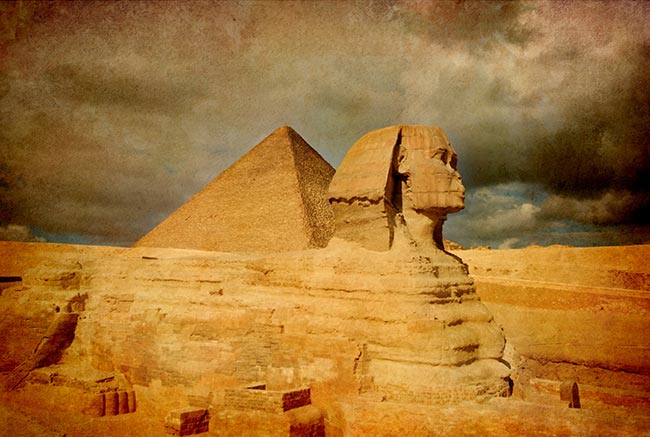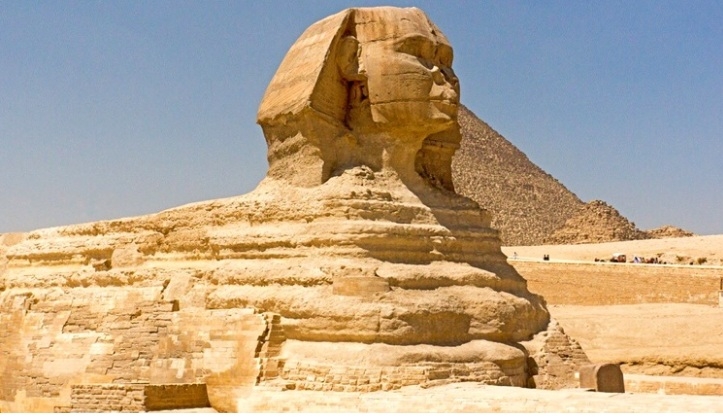The Sphinx: Guardian of Giza | Cairo Attractions | Egypt Attractions
The Great Sphinx of Giza is one of the most mysterious and awe-inspiring monuments in the world. Towering silently on the Giza Plateau, this colossal limestone statue with the body of a lion and the head of a human has fascinated travelers, historians, and explorers for centuries. As one of the most iconic Cairo Attractions and a central highlight among all Egypt Attractions, the Sphinx embodies the grandeur, symbolism, and enigma of ancient Egyptian civilization.
This guide is designed to give tourists a comprehensive understanding of the Sphinx: its history, significance, mysteries, and practical tips for visiting. Whether you are preparing for your first trip to Egypt or deepening your knowledge about this legendary monument, this in-depth resource will help you connect more deeply with one of humanity’s greatest treasures.

The Sphinx at a Glance
-
Location: Giza Plateau, west of Cairo
-
Era of Construction: Believed to be during the reign of Pharaoh Khafre (c. 2558–2532 BCE)
-
Material: Carved from limestone bedrock
-
Dimensions: 73 meters (240 feet) long, 20 meters (66 feet) high
-
Purpose: A guardian figure, symbol of royal power and divine protection
The Sphinx is not only one of the largest and oldest statues in the world but also one of the most studied, debated, and photographed monuments in history.
Historical Background of the Sphinx
The exact date of the Sphinx’s construction remains a topic of debate, but most Egyptologists agree it was built during the reign of Pharaoh Khafre of the Old Kingdom’s Fourth Dynasty. Khafre was also responsible for the second pyramid of Giza, located directly behind the Sphinx.
The Sphinx was likely meant to serve as a spiritual guardian, standing watch over Khafre’s pyramid complex. The lion’s body symbolized strength and dominance, while the human face, often believed to be Khafre himself, embodied wisdom and royal authority.
What makes the Sphinx unique is its combination of power and intellect. While lions represented ferocity and kingship in Egyptian mythology, the human element elevated the statue to a divine protector of the pyramids, guarding the sacred necropolis of Giza.
The Symbolism of the Sphinx
Ancient Egyptians were masters of symbolism, and the Sphinx is no exception. Its components each carry significant meaning:
-
The Lion’s Body: Lions were revered for their strength and association with the sun god. They represented dominance and protection.
-
The Human Face: Likely modeled after Pharaoh Khafre, the face represents human intelligence, leadership, and divine kingship.
-
The Size and Scale: Its monumental scale was intended to inspire awe, projecting eternal strength and spiritual guardianship.
Together, these features embodied the dual aspects of rulership: both the physical might to protect and the wisdom to lead.
The Mysteries of the Sphinx
The Sphinx is shrouded in mysteries that have fueled fascination for centuries.
Who Built It?
Most scholars credit Khafre with the construction, but alternative theories suggest earlier pharaohs, even dating the Sphinx to a pre-dynastic era. Some fringe theories link its construction to advanced lost civilizations.
The Missing Nose
One of the most recognizable features of the Sphinx is its damaged face. The nose is missing, and many myths surround its destruction. Popular legends suggest it was destroyed by Napoleon’s soldiers, but sketches from before Napoleon’s campaign show the nose already gone. More likely, it was deliberately destroyed in the 14th century by a Sufi mystic who considered the statue an object of idolatry.
The Dream Stele
Between the Sphinx’s paws lies the Dream Stele, erected by Pharaoh Thutmose IV. According to the inscription, Thutmose fell asleep in the shadow of the Sphinx and dreamed that the statue promised him kingship if he cleared away the sand covering its body. This stele connects the Sphinx to divine destiny and kingship.
Hidden Chambers and Tunnels
Modern archaeology has uncovered cavities and tunnels beneath the Sphinx, sparking theories about hidden chambers containing ancient secrets. While most have been found to be natural fissures, the idea of hidden treasure or lost records continues to intrigue explorers and tourists alike.
The Sphinx in Ancient Religion
The Sphinx was not just an artistic masterpiece but also a religious symbol. In Egyptian belief, it was associated with the sun god Ra-Horakhty, a fusion of Ra (the sun god) and Horus (the falcon god). This divine connection made the Sphinx a symbol of solar worship and a protector of sacred spaces.
Temples around the Sphinx were dedicated to solar deities, emphasizing its role as both a religious and spiritual figure. For ancient Egyptians, the Sphinx was more than stone; it was a living representation of divine guardianship.
.jpg)
The Sphinx and Modern Tourism
Today, the Sphinx is one of the most visited landmarks in the world. It draws millions of tourists every year, who stand in awe before its massive size and enigmatic expression.
As a highlight of Cairo Attractions, the Sphinx is often visited alongside the Great Pyramids of Giza. Tourists can approach the monument, walk along designated paths, and capture stunning photographs with the pyramids as a backdrop.
Visiting the Sphinx is not only about sightseeing but also about experiencing the mystery and energy of a place that has inspired human imagination for thousands of years.
Visiting the Sphinx: Practical Tips
1. Location and Accessibility
The Sphinx is located on the Giza Plateau, about 30 minutes from downtown Cairo. Taxis, ride-shares, and organized tours make access easy.
2. Best Time to Visit
The early morning is the best time to visit, especially in summer, when temperatures are cooler and crowds are smaller. Sunset also provides magical lighting for photos.
3. Tickets
Entrance to the Sphinx is included in the general Giza Plateau ticket. Special tickets are needed for entering the pyramids themselves.
4. Photography
The Sphinx offers some of the most iconic photo opportunities in Egypt. Consider taking pictures from multiple angles, especially with the pyramids in the background.
5. Guided Tours
Hiring a knowledgeable Egyptologist guide will enrich your visit, as they can explain the myths, history, and hidden details that most visitors miss.
The Sphinx in Culture and Imagination
The Sphinx has transcended its role as an ancient statue to become a global cultural icon. From ancient Greek myths to modern movies, literature, and art, the Sphinx symbolizes mystery, riddles, and timeless wisdom.
Greek mythology borrowed the image of the Sphinx but gave it a darker twist: a creature who asked riddles and devoured those who answered incorrectly. This fusion of Egyptian grandeur and Greek imagination shows the Sphinx’s enduring influence across civilizations.
In modern culture, the Sphinx appears in films, novels, and even video games, maintaining its reputation as a guardian of secrets and mysteries.
.jpg)
The Sphinx and the Pyramids: A Perfect Duo
The Sphinx is inseparably linked with the Great Pyramids of Giza, creating one of the most remarkable archaeological landscapes on Earth. While the pyramids represent the tombs of pharaohs and their journey to the afterlife, the Sphinx serves as the eternal guardian of these sacred monuments.
Together, they embody the peak of Egyptian architectural and spiritual achievement. For travelers, visiting both is a complete immersion into the wonders of the ancient world.
The Enduring Legacy of the Sphinx
For over 4,500 years, the Sphinx has withstood sandstorms, invasions, and the test of time. Despite erosion and damage, it remains a symbol of endurance, mystery, and majesty.
As one of the greatest treasures among Egypt Attractions, the Sphinx continues to inspire awe in everyone who stands before it. It connects us to a civilization that valued strength, wisdom, and the eternal journey of the soul.
For tourists, the Sphinx is not just a monument to photograph but a profound reminder of the power of human imagination and belief.
Conclusion: Why the Sphinx Should Be on Your Egypt Itinerary
If you are planning a trip to Egypt, the Sphinx is an unmissable highlight of your journey. As one of the most iconic Cairo Attractions, it offers a once-in-a-lifetime experience where history, mystery, and culture converge. Standing before the Sphinx, with the pyramids rising behind it, you become part of a timeless story that has captivated humanity for millennia.
From its enigmatic face to its symbolic power, the Sphinx is more than just a statue—it is a living guardian of Egypt’s legacy. Don’t miss the chance to witness it yourself.
Book your Egypt Travel Packages today and discover why the Sphinx remains one of the most extraordinary attractions in the world.


.jpg)